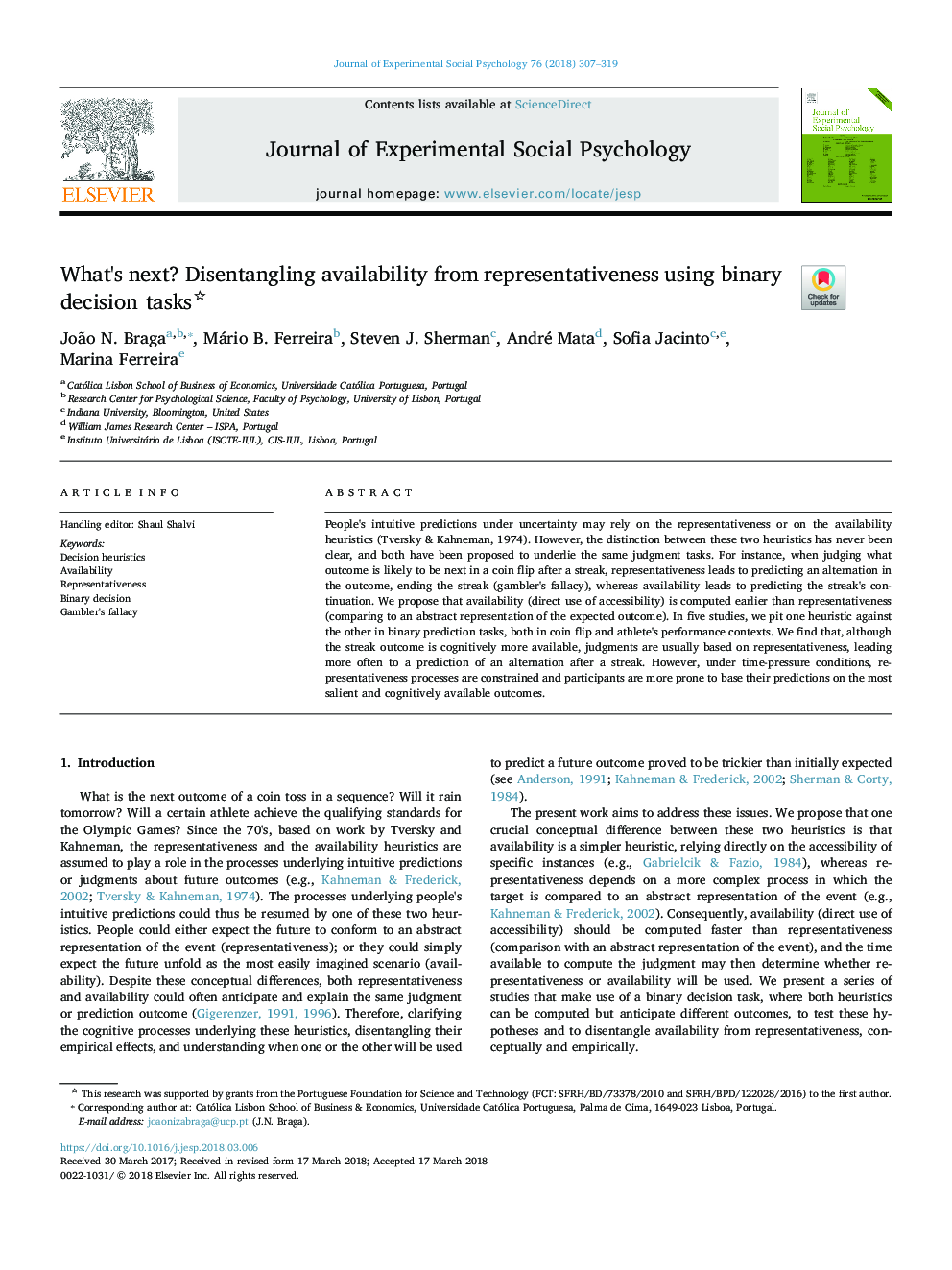| Article ID | Journal | Published Year | Pages | File Type |
|---|---|---|---|---|
| 7324154 | Journal of Experimental Social Psychology | 2018 | 13 Pages |
Abstract
People's intuitive predictions under uncertainty may rely on the representativeness or on the availability heuristics (Tversky & Kahneman, 1974). However, the distinction between these two heuristics has never been clear, and both have been proposed to underlie the same judgment tasks. For instance, when judging what outcome is likely to be next in a coin flip after a streak, representativeness leads to predicting an alternation in the outcome, ending the streak (gambler's fallacy), whereas availability leads to predicting the streak's continuation. We propose that availability (direct use of accessibility) is computed earlier than representativeness (comparing to an abstract representation of the expected outcome). In five studies, we pit one heuristic against the other in binary prediction tasks, both in coin flip and athlete's performance contexts. We find that, although the streak outcome is cognitively more available, judgments are usually based on representativeness, leading more often to a prediction of an alternation after a streak. However, under time-pressure conditions, representativeness processes are constrained and participants are more prone to base their predictions on the most salient and cognitively available outcomes.
Related Topics
Life Sciences
Neuroscience
Behavioral Neuroscience
Authors
João N. Braga, Mário B. Ferreira, Steven J. Sherman, André Mata, Sofia Jacinto, Marina Ferreira,
